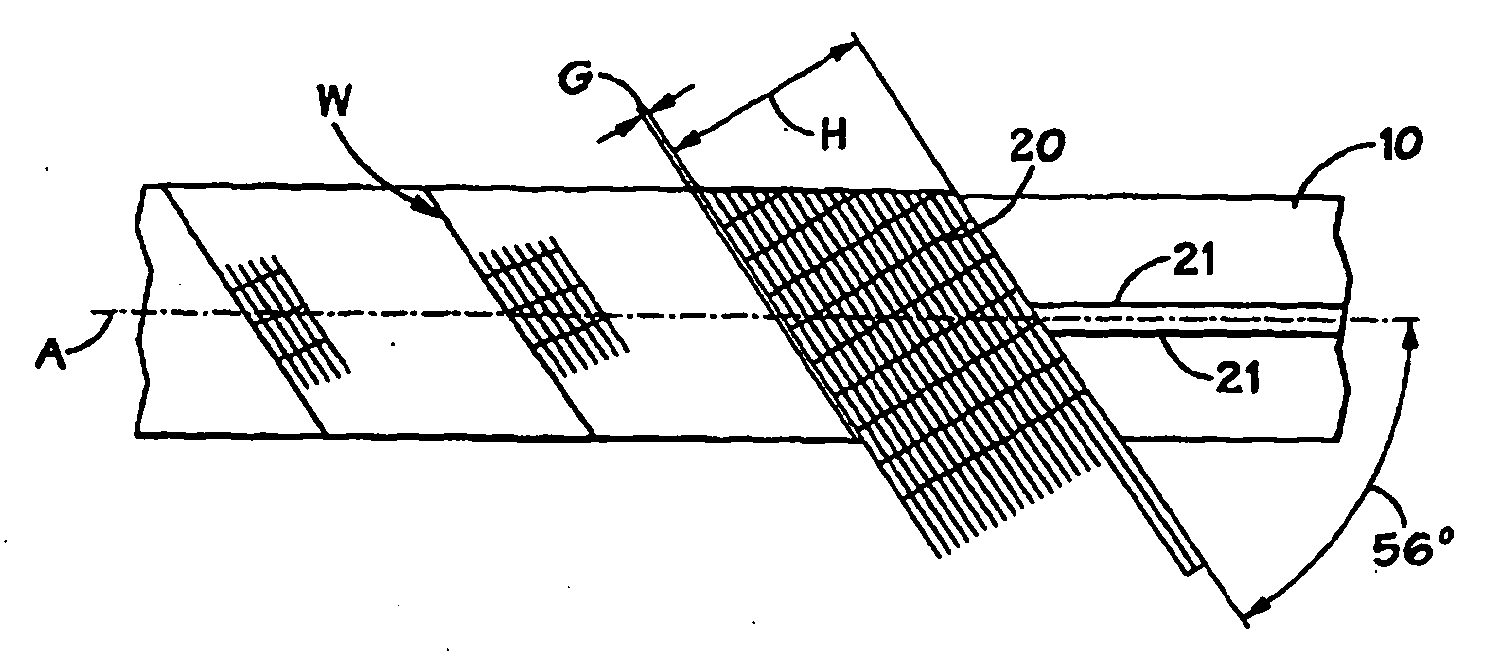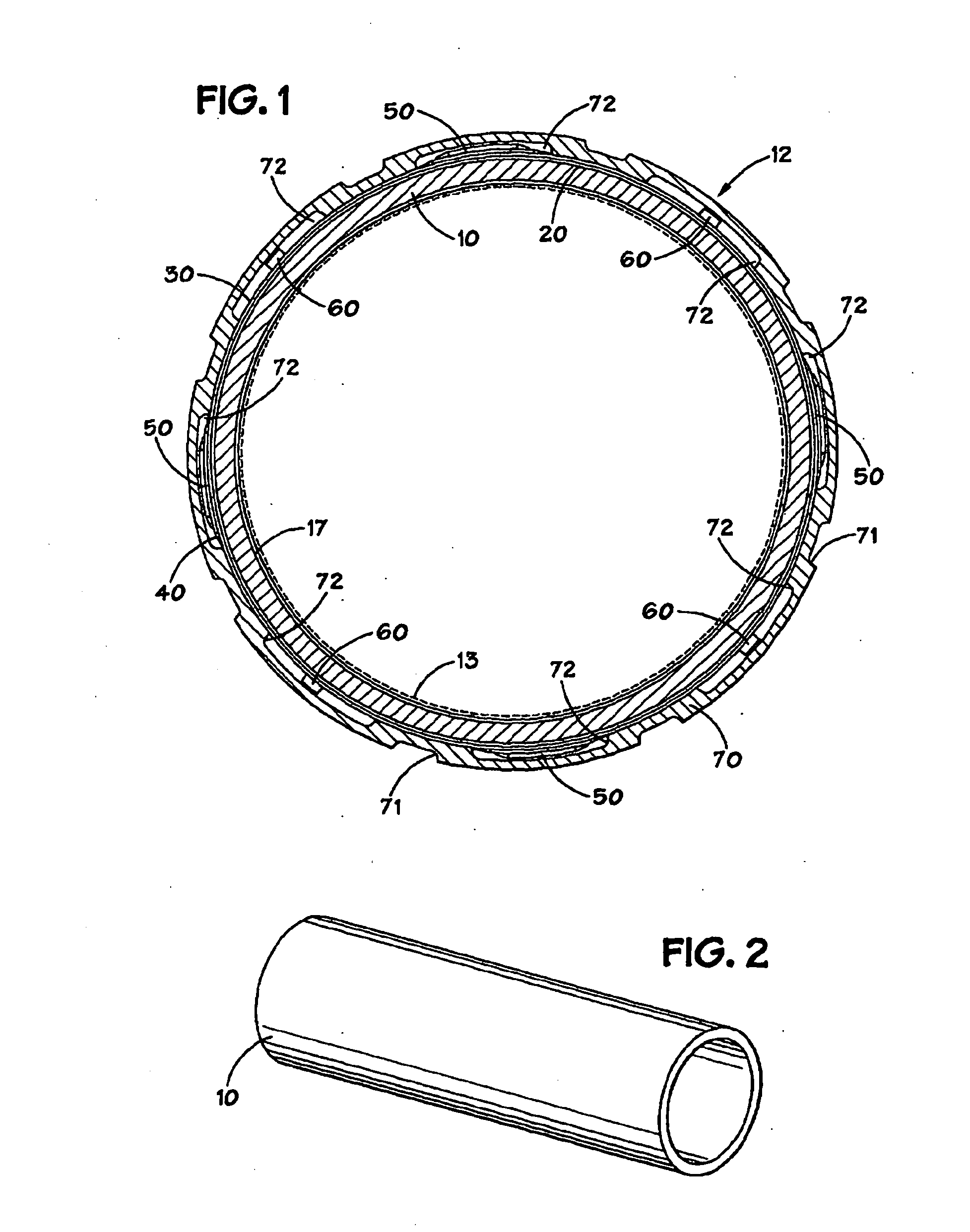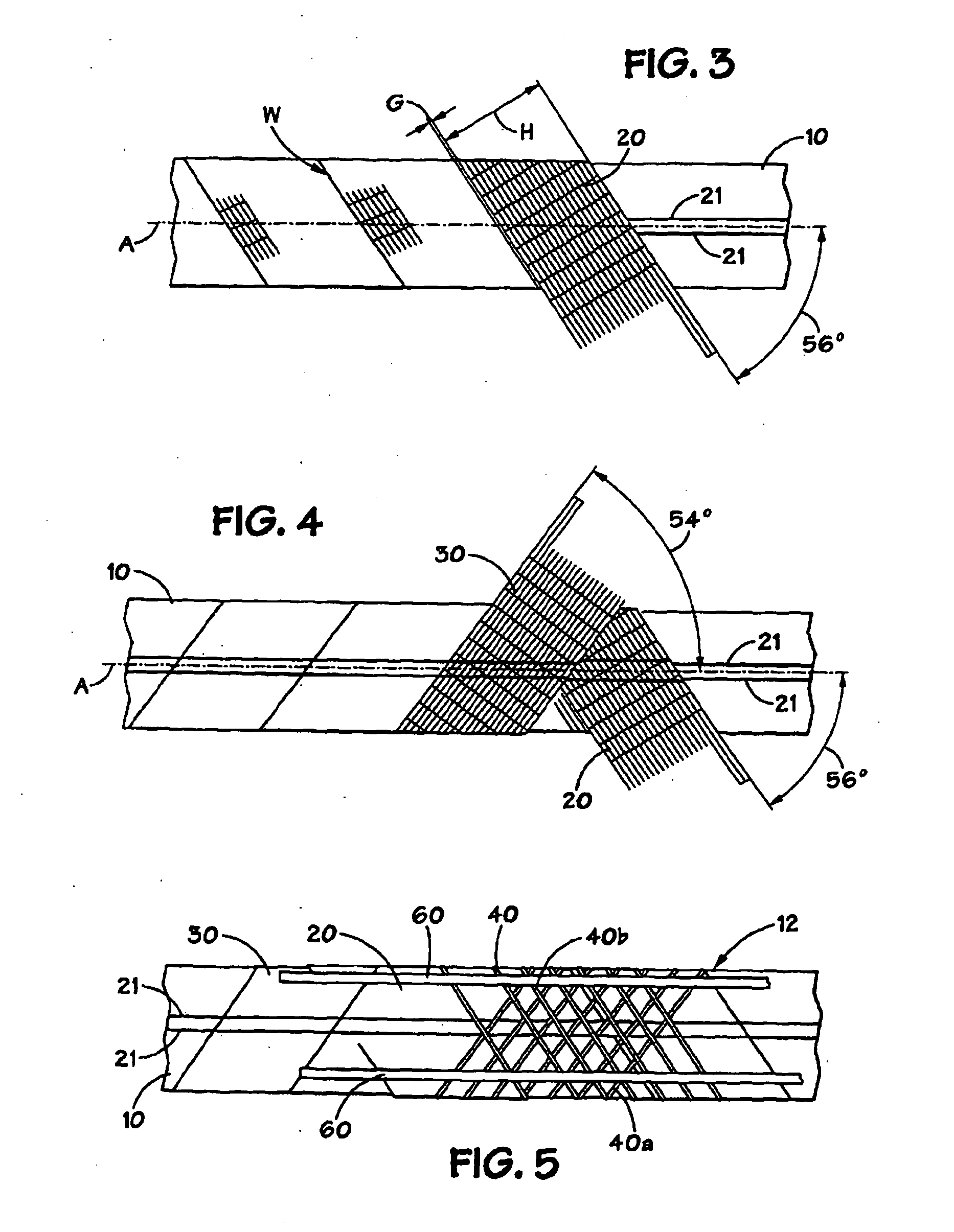Systems and methods for making pipe, and method of installing the pipe in a pipeline
a technology of system and pipe, applied in the field of nonmetallic pipes, can solve the problems of contaminating the transported, the continued utilization of metal articles becomes more and more difficult, and the potential for internal and external corrosion of metal pipes and tubes
- Summary
- Abstract
- Description
- Claims
- Application Information
AI Technical Summary
Benefits of technology
Problems solved by technology
Method used
Image
Examples
Embodiment Construction
[0053]A pipe liner 12 (or “pipe”) according to the present invention as shown in FIG. 1 has an innermost first layer (which when formed is a hollow cylinder, in one aspect, a deformable / re-formable cylinder), a second layer 20, a third layer 30, fiber strands 40, spacers 50, fiber optic cables 60, and a cover 70.
[0054]As shown in FIGS. 1 and 2, the first layer 10 is a generally cylindrical member made of flexible material sufficiently strong to support the other layers and components and sufficiently flexible to be compressed, deformed, and re-formed. In one particular aspect the first layer 10 is extruded HDPE (e.g. any suitable grade; e.g. PE 3408, PE 100), with an outside-diameter-to wall-thickness ratio SDR of about 32.5 in hollow cylindrical form. In certain aspects the lined pipe is between 0.1 m and 0.76 m (4″ and 30″) in O.D. and, in other aspects, the pipe that is lined is standard size (iron pipe size or IPS) and has an O.D. between 0.15 m and 0.41 m (6″ and 16″). In one p...
PUM
| Property | Measurement | Unit |
|---|---|---|
| length | aaaaa | aaaaa |
| winding angle | aaaaa | aaaaa |
| winding angle | aaaaa | aaaaa |
Abstract
Description
Claims
Application Information
 Login to View More
Login to View More - R&D
- Intellectual Property
- Life Sciences
- Materials
- Tech Scout
- Unparalleled Data Quality
- Higher Quality Content
- 60% Fewer Hallucinations
Browse by: Latest US Patents, China's latest patents, Technical Efficacy Thesaurus, Application Domain, Technology Topic, Popular Technical Reports.
© 2025 PatSnap. All rights reserved.Legal|Privacy policy|Modern Slavery Act Transparency Statement|Sitemap|About US| Contact US: help@patsnap.com



